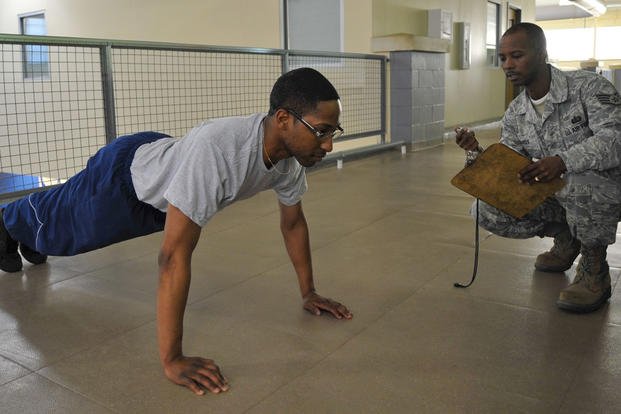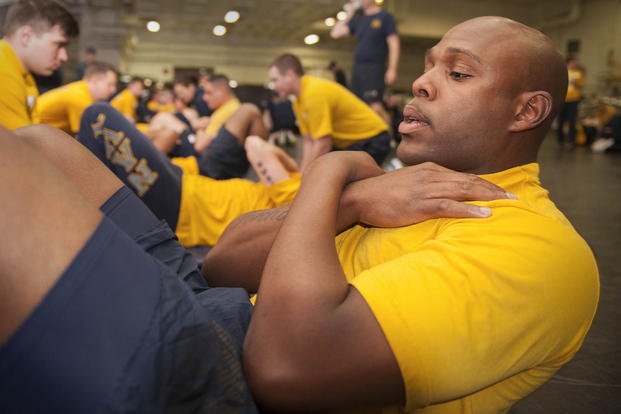For more than a decade and a half of writing about working out and acing fitness tests primarily, I often get questions that start off with, "Stew -- what is the best way to (insert event)? The most common one is "run faster in timed runs." Or "do more pull-ups, push-ups, sit-ups" is often asked.
And, of course, there are questions related to improving swimming times. "What is the best way to increase my swim speed/ decrease swim times per given distance?" Or a very controversial topic: "What is the best way to build muscle?"
I bring up this topic because I got distracted after reading an email from a young man trying to ace his sit-up test. He is seeking a goal to keep a pace of one sit-up per second or scoring 120 sit-ups in a two-minute period.
This is a great goal. It is not uncommon in the spec-ops candidate world to see 120+ on two-minute sit-up tests, and there is a way to build up to get there. Here is the question:
"Stew -- I have a sit-up test that I scored near the minimums on the first time (60 in 2 minutes), acceptable a month later (90 in 2 minutes), but I want to master this event as it once embarrassed me. The sit-ups -- I overestimated my abilities and did not practice (like you said) and was ranked last in our group on sit-ups. Now I want to max it and [am] not far away from it. What is the best way to get that max score in sit-ups?"
These questions of improving scores have one word that brings out the naysayers, dissenters and people with an opinion on how stupid a method of training is, compared to their own.
That is the word best. How do you define best? Is there a better way to get the best results? Are you in a race, and the best results have to be done in a certain period of time? Are you wanting to do the least amount of effort possible and produce the best results? Is there some sort of fitness invention that will help me get the best results? Is there a pill I can take that will make me the best? So much is made about this word, best, in the fitness world, and most of the people, companies and even academic fitness studies are guilty of using this word to sell a point.

Fitness Programs
Most fitness programs will say their methods are the best at performing "X." Whether that is general fitness, weight loss, muscle gain or athletic performance, such as speed, power, agility and endurance, there are many programs that yield excellent results. But the best?
Most fitness programs do not take us anywhere near our total fitness potential. They might make us look good, perform very well for our age groups and even get through tough military training programs, but they are missing that 5%-10% of the total potential of the human body. Let's be honest. If you are not creating programs for the biggest, fastest and strongest athletes in the world who compete with the best of the best, chances are that you do not have the best methods out there. The best of the best are constantly searching for ways to find that missing 5%-10%. That is the best.
Fitness Products
Most fitness companies selling a weight-loss product will claim they have the best products and systems on the market, because they produce the most amount of weight loss in the shortest period of time. Even if the claims are true, does that make them the best?
What is the difference between losing 50 pounds over a six- or three-month period? Sure -- three months, but at the end of the six-month period, when two people look back at their similar results, do you think they are still happy that they lost 50 pounds?
Both are happy with the results. Is one better since it worked faster? Maybe? But my point is, both methods worked, and you cannot argue with the end result.
Fitness Studies
In academic studies, they use the word optimal. This is fine, and I enjoy reading studies that disprove other studies that I have been following for years. Most of the time, the study finds a way to say that this way for fat loss, performance, muscle gain, etc., is better than the way that has seen results for decades.
Both still work. One just may be better, according to the criteria set up in the study. This criteria could be studying optimal results in men/women, young/old and athletes/non-athletes. Depending on the criteria set up in the study, the best or optimal way to do something may or may not pertain to your fitness goals.
In other words, read things carefully before you make massive changes to a program that might be working fine for you. Unless you are finding yourself injured often, stuck at the same results for long periods of time (months) or demotivated with current programming, you should consider looking for new ways to train that work for you.
Back to Sit-ups
Sorry for the rant. This question got me a bit off track, but that word best causes me to ponder on the effective methods of training with anything. Back to your question with my answer: So to get 120 sit-ups in 120 seconds sets you up at a pace of one per second. Easy math.
The method I think works the best is to do timed sit-up sets every other day at your goal pace.
Since you are already at 90 sit-ups in a two-minute test, you have a great foundation and should see your results pretty quickly. Start off with 30-second sets, scoring 30 sit-ups. Then one-minute sets scoring 60 seconds ... and so on.
See whether you can handle the following supplemental sit-up routine:
Do at the beginning and end of your normal workout routine.
Repeat four times.
- 30 sit-ups in 30 seconds
- "rest" with another calisthenics exercise or a quarter-mile run at your goal mile pace.
If that was easy, up it a notch with:
Do at the beginning and end of your normal workout routine.
Repeat 3-4 times.
- 60 sit-ups in one minute.
- One-minute plank pose or a quarter-mile run at goal mile pace
Once that gets easy, increase your time limit to 1:30.
Do at the beginning and end of your normal workout routine.
Repeat twice.
90 sit-ups in 1:30.
Rest as needed with any exercise or cardio event for 2-3 minutes.
The last step: Any time during your normal workout, stop and do a two-minute test of sit-ups. Do this a few times every other day, and soon you will see that this two-minute test pace of one sit-up per second is very achievable.
Finally and most importantly for best results. Practice the test. Do not just practice the two-minute sit-ups; remember that in most fitness tests, the sit-ups are not the first exercise. So when you do your two-minute tests, try to mimic the fitness test you are striving to ace in order to "feel" the way you will when you have to perform for two minutes of sit-ups.
Do not forget to balance out the core with plank poses as well for the amount of time spent doing sit-ups each day.
So the best strategy is to pace yourself. Learn the pace you need and practice the pace until you build the needed muscle stamina to maintain that pace. This is not a sprint exercise since it is the two-minute test, so work at the pace you need to get the score you want.
Notice I did not say use the ab wheel, take a sit-up pill to get better at sit-ups or STOP doing sit-ups because a study proved them to be bad for your back. If you want to get better at these exercises, do them. And the great thing about this is, if someone has another way that helps you get 120 sit-ups in two minutes -- great. It does not mean one method is wrong or even better than the other. It just means there is more than one route to get to the destination.
Good luck with your training and good job seeking to score the best. There is nothing wrong with wanting to be the best. Hope you enjoyed the rant. Stew Smith out.
Stew Smith is a former Navy SEAL and fitness author certified as a Strength and Conditioning Specialist (CSCS) with the National Strength and Conditioning Association. Visit his Fitness eBook store if you're looking to start a workout program to create a healthy lifestyle. Send your fitness questions to stew@stewsmith.com.
Want to Learn More About Military Life?
Whether you're thinking of joining the military, looking for fitness and basic training tips, or keeping up with military life and benefits, Military.com has you covered. Subscribe to Military.com to have military news, updates and resources delivered directly to your inbox.





















